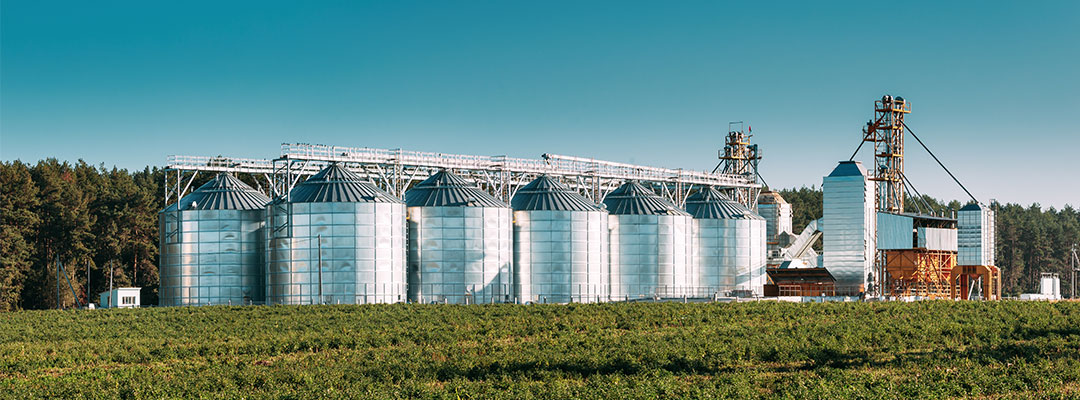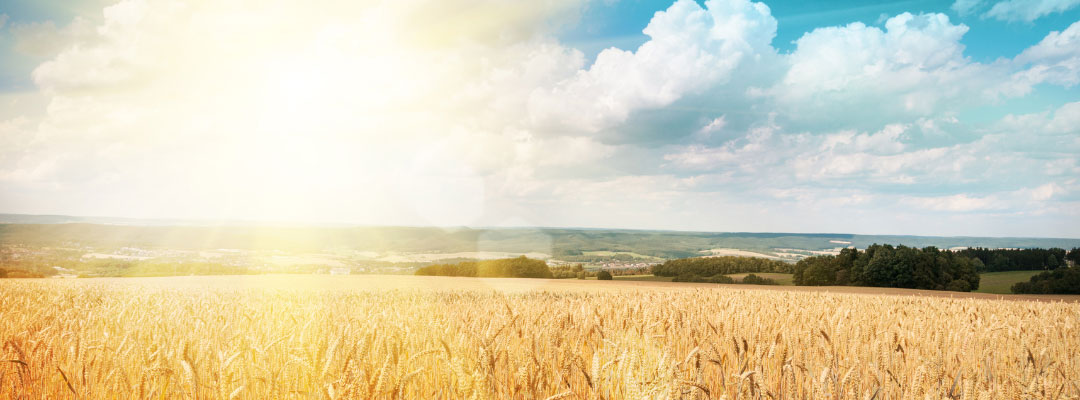Throughout the year, the United States Department of Agriculture (USDA) updates its estimates of U.S. supply and demand factors for selected crops. This article explores projection updates, via the USDA Acreage Report (AR), released on June 30, 2023, and marketing and risk management implications. The initial estimates for the 2023/24 growing season planted acreage were released in February at the USDA Agricultural Outlook Forum (AOF) (Smith and Gardner, 2023). The estimates were then updated in March via the Prospective Planting Report (PPR) (Biram and Maples, 2023). Projected acreage for five crops (corn, soybeans, wheat, rice, and cotton) and the percentage change in acreage estimates can be found in Table 1.
The initial estimate for corn acreage was 91 million acres in February, which was increased to 92 million in March, and now sits at 94 million in June. This is the third-highest number of acres planted to corn since 1944 (USDA-NASS, 2023). It is worth noting that corn harvested for grain makes up a smaller number of acres at 86.3 million acres but is still up 9% from last year (USDA-NASS, 2023). Estimated soybean acreage dropped 4.6% to 83.5 million acres in the most recent acreage report, whereas wheat acreage has been similar in all three reports. Rice acres have increased sequentially by month and are up 7.5% from the initial February projection. Cotton acres increased from 10.9 million acres to 11.3 million acres in March before finding common ground at an estimated 11.1 million planted acres in June.
Looking at the possible price impacts in the acreage report, we take a close look at corn and soybeans, which have experienced the largest acreage changes. Recent upticks in the prices of both commodities have been driven by drought throughout major crop-producing states, causing a weather induced “crop scare event.” During this crop scare, the drought impacted corn and soybean supply expectations which caused market and futures prices to increase drastically. Prices peaked on June 21st and began to fall due to rainfall in key production states such as Indiana, Illinois, and Iowa. The large increase in corn acreage in the June acreage report will make the corn market price less susceptible to future supply shocks, causing a lower price environment. However, the opposite may hold true for soybeans which have dropped 4 million acres. As there are fewer soybean acres than previously projected, soybean prices could be more susceptible to further price increases due to detrimental weather, which causes deterioration in crop conditions and expected yield.
Corn and soybeans had complete opposite price responses to the June Acreage Report, with the corn price decreasing 33 cents to $4.95/bu and soybeans increasing 77 cents to $13.42/bu. Rough rice and cotton futures had essentially no response to the June acreage report with rough rice remaining flat at $15.25/cwt and cotton only increasing to 80.37 cents/lb from 79.04 cents/lb. A marketing tool available to producers that could be considered is buying a put option to place a floor on the futures price. A put option gives the right but not the obligation to sell a futures contract at the strike price specified in the put option contract, so long as the futures price is below the strike price at the time the option is exercised (i.e., “in the money”). Producers can use this strategy to protect against futures market price declines while allowing them to benefit if prices rally. See Biram and Smith (2022) for an explanation of using options to augment one’s risk management plan. Additionally, producers can manage price risk in their local cash market by locking in prices received at harvest at a local grain elevator or grain purchaser through forward contracting (see Maples, 2023).
Lastly, we take a look at the potential price protection a producer has if they purchased crop insurance by considering the futures price as of the afternoon of June 30, 2023, relative to the Projected Crop Insurance Price released by USDA-RMA in the winter (Table 2). Harvest month futures contracts for corn, soybeans, rice, and cotton are lower relative to their respective Projected Price with corn having a substantially lower price. Notably, if the 2023 growing season were to end today, holding 2023 harvest yield the same as APH yield, 85% Revenue Protection would already trigger an indemnity for corn with ZCZ23 being 83% of the Projected Price. The current harvest month corn futures price would also trigger an indemnity under Enhanced Coverage Option (ECO) and Supplemental Coverage Option (SCO), assuming no difference in the county expected harvest yield and established APH. This is because ECO and SCO trigger an indemnity once county-level revenue falls below 95% and 86% of the county-level revenue guarantee, respectively. We also see ECO would trigger an indemnity for rice, assuming no change in the expected harvest yield.
Table 1: Acres Planted by USDA Report and Percentage Change
| Report | AOF | PPR | AR | % Change from February | % Change from March |
| Month | February | March | June | ||
| Corn Acres (Millions) | 91 | 92.0 | 94.1 | 3.4% | 2.3% |
| Soybean Acres (Millions) | 87.5 | 87.5 | 83.5 | -4.6% | -4.6% |
| Wheat Acres (Millions) | 49.5 | 49.9 | 49.6 | 0.3% | -0.5% |
| Rice Acres (Millions) | 2.5 | 2.6 | 2.7 | 7.5% | 4.0% |
| Cotton Acres (Millions) | 10.9 | 11.3 | 11.1 | 1.7% | -1.5% |
Table 2. Current Futures Price as a Percentage of RMA Projected Crop Insurance Price
| Crop | Futures Price | Projected Price | Futures Price as % of Projected Price |
| Corn (ZCZ23) | $4.95/bu | $5.94/bu | 83% |
| Soybeans (ZSX23) | $13.42/bu | $13.65/bu | 98% |
| Rough Rice (ZRX23) | $15.25/cwt | $16.90/cwt | 90% |
| Cotton (CTZ23) | 80.31 ¢/lb | 85.00 ¢/lb | 95% |
References:
Biram, Hunter, and William E. Maples. “Key Takeaways and Reliability of the 2023 Prospective Plantings Report.” Southern Ag Today 3(14.1). April 1, 2023. Permalink
Biram, Hunter, and S. Aaron Smith. “The Option to Augment the Crop Insurance Price Floor“. Southern Ag Today 2(35.1). August 22, 2022. Permalink
Maples, Will. “Considerations for Developing a Pre-Harvest Marketing Plan.” Southern Ag Today 2(47.1). November 14, 2022. Permalink
Smith, Aaron, and Grant Gardner. “February USDA Agricultural Outlook Forum Projections Compared to USDA Final Estimates.” Southern Ag Today 3(10.1). March 6, 2023. Permalink
United States Department of Agriculture. “Cotton Outlook,” 2023. https://www.usda.gov/sites/default/files/documents/2023AOF-grains-oilseeds-outlook.pdf.
United States Department of Agriculture. “Grain and Oilseeds Outlook,” 2023. https://www.usda.gov/sites/default/files/documents/2023AOF-grains-oilseeds-outlook.pdf.
USDA-NASS. “Acreage” 2023. https://downloads.usda.library.cornell.edu/usda-esmis/files/j098zb09z/hh63v8465/zg64w269x/acrg0623.pdf
USDA-NASS. “Prospective Plantings Report” 2023. https://downloads.usda.library.cornell.edu/usda-esmis/files/x633f100h/rv044597v/gx41nz573/pspl0323.pdf











